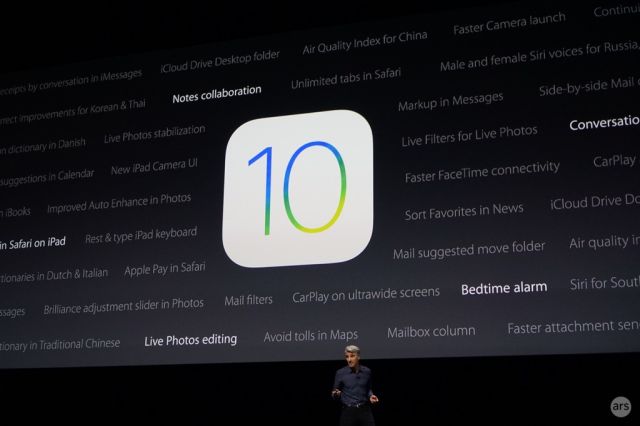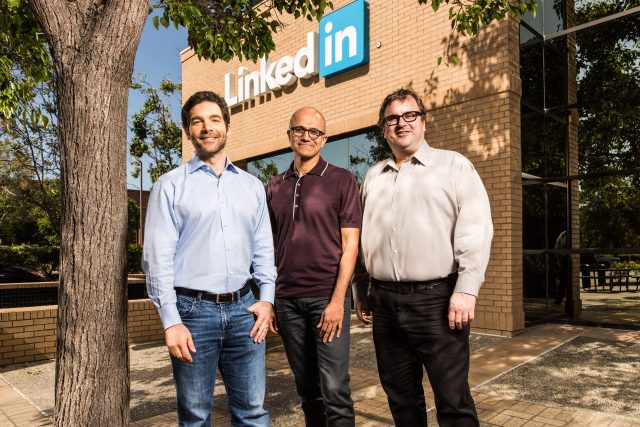 Was hat das neue Zelda mit Horizon Zero Dawn gemein? Ganz schön viel. Aber dann auch wieder erstaunlich wenig, finden unsere wackeren E3-Redakteure im Gespräch. (E3 2016, Sony)
Was hat das neue Zelda mit Horizon Zero Dawn gemein? Ganz schön viel. Aber dann auch wieder erstaunlich wenig, finden unsere wackeren E3-Redakteure im Gespräch. (E3 2016, Sony) Month: June 2016
AMA takes on NRA: Doctors prep for political battle over gun violence crisis
US gun violence “unrivaled” in developed world and requires research, doctors say.

(credit: Michael Saechang)
Following Sunday’s tragic mass shooting in Orlando—the deadliest in US history—the American Medical Association has officially declared gun violence in the US an unrivaled public health crisis. With this declaration, the AMA will now actively lobby Congress to overturn legislation that has kept the Centers of Disease Control and Prevention from researching gun violence for the past 20 years—legislation backed largely by the National Rifle Association.
In a statement, AMA President Steven J. Stack, M.D, said:
"With approximately 30,000 men, women and children dying each year at the barrel of a gun in elementary schools, movie theaters, workplaces, houses of worship and on live television, the United States faces a public health crisis of gun violence. Even as America faces a crisis unrivaled in any other developed country, the Congress prohibits the CDC from conducting the very research that would help us understand the problems associated with gun violence and determine how to reduce the high rate of firearm-related deaths and injuries. An epidemiological analysis of gun violence is vital so physicians and other health providers, law enforcement, and society at large may be able to prevent injury, death and other harms to society resulting from firearms."
The AMA now joins other medical organizations, including the American College of Physicians and American College of Surgeons, in declaring gun violence a public health crisis and pushing for renewed research. However, the declaration from the AMA may hold the most clout as the powerful organization has a massive membership and is a top spender when it comes to lobbying. Between 1998 and 2011, the AMA came up as the second highest spender on lobbying in the country, shelling out around $263 million.
RAW shooting, a harsher Gatekeeper, and more obscure macOS and iOS 10 changes
We went digging for the features that nerds will care the most about.

Enlarge / The onstage presentations don't encompass every new feature in iOS 10 and macOS Sierra. (credit: Andrew Cunningham)
When Apple announced iOS 10 and macOS Sierra at its WWDC keynote yesterday, it hit most of the high notes. Big user-facing features like the Siri API on iOS and Siri on the Mac, the revamped Messages app, Universal Clipboard, and tweaks to Photos and Apple Music got stage time, but as the company said, there was more stuff that didn’t get any attention.
Our previews and reviews of the beta and final versions of the OSes will cover all of those features and lots of the smaller, less notable tweaks to Apple’s built-in apps, but after a few hours of digging through the developer documentation we’ve also unearthed a few neat under-the-hood tweaks in both Sierra and iOS 10.
iCloud syncing without the Mac App Store
Can someone check the Mac App Store’s pulse? I’m worried about it.
After net neutrality loss, ISPs get ready to take case to Supreme Court
FCC won in all facets of today’s decision, but ISPs are not out of options.

The next stop for net neutrality? (credit: Joe Ravi (CC-BY-SA 3.0))
Today's court decision upholding net neutrality rules is a huge legal milestone for the Federal Communications Commission's attempt to more strictly regulate Internet service providers. But as you might expect, the fight is not over, and it could end up being decided by the Supreme Court.
The FCC won a 2-1 decision (full text) from a three-judge panel at the US Court of Appeals for the District of Columbia Circuit, as judges rejected challenges to the FCC's reclassification of broadband as a Title II common carrier service and imposition of net neutrality rules. But ISPs and their lobby groups are not out of legal options: they can ask the same court for an "en banc" review in front of all of the court's judges instead of just a three-judge panel. If that fails, they could appeal to the Supreme Court, or they could skip the en banc step and go straight to the nation's highest court.
The Supreme Court can pick and choose what cases it wants to hear, so there's no guarantee ISPs would even get in front of the justices. Law professors interviewed by Bloomberg said chances of a high court review are so slim that ISPs would be best served by asking for an en banc review first. The fact that it was a 2-1 decision instead of 3-0 may increase the chances of an en banc review, but there's no reliable way to predict how it will turn out.
The OnePlus 3 brings a Snapdragon 820, 6GB of RAM, and aluminum body for $399
The best part is you can actually buy this one: There’s no invite system.
After the OnePlus One, 2, and X, OnePlus is back with a new flagship, the OnePlus 3. OnePlus is going for the "bang for your buck" market here with a Snapdragon 820, a whopping 6GB of RAM, and a 5.5-inch 1080p AMOLED display for just $399/€399/£309.
The device ships with 64GB of storage, but unlike the OnePlus X, there is no expandable storage option. The battery is also a tad smaller than previous models: 3000mAh. All the other extras are here: you get NFC, a dual SIM slot, fingerprint reader, and a USB Type-C plug. The camera is 16MP with optical image stabilization, RAW support, and manual controls. Oh, there's also a 3.5mm headphone jack, which is something we have to check for now on phones of the future. The body is aluminum and comes in "Graphite" and "Soft Gold." Like in past OnePlus designs, there are three hardware buttons at the bottom, with the middle "home" button doubling as a fingerprint reader.
OnePlus is making a big deal of its "Dash" phone charger, which it says will charge the phone to 63 percent in a half hour. During Dash charging, the power management system inside the phone shuts off, and the system inside the charger takes over. OnePlus says this keeps the phone cooler during charging, allowing the battery to charge faster. This requires a proprietary "Dash Charge" cable and adapter.
I’ve slept on it—I’m still baffled at Microsoft buying LinkedIn for $26.2B
Analysis: Microsoft is buying the cow when all it wants is some milk.

(credit: Microsoft)
Yesterday, Microsoft announced that it was buying business-oriented social network LinkedIn for a casual $26.2 billion dollars. It didn't make a whole lot of sense then, and now, having slept on it and taken the time to think it over, it still doesn't make a whole lot of sense.
Microsoft's track record at big budget acquisitions is poor. Marketing firm aQuantive was bought for $6 billion in 2007; that led to a $6.2 billion write-down in 2012. Nokia's mobile phone division was bought in 2014 for €5.4 billion (about $6.1 billion). This led to write-downs totalling about $8.5 billion in 2015 and 2016. The company bought Skype for $8.5 billion in 2011, and while Skype continues to be a going concern, it has ceded ground in many areas. Messaging platforms such as WhatsApp and Facebook Messenger have boomed, leaving Skype behind. Upstarts such as Discord are also becoming viable alternatives for many users, and Skype users continue to have gripes about the clients, the quality of the network, and Microsoft's uncertain strategy for future development.
The LinkedIn deal—$26.2 billion dollars for a company that doesn't make a (GAAP) profit—dwarfs these past purchases.
Database corruption erases 100,000 Air Force investigation records
Inspector General’s case tracking system data back to 2004 lost.

Apparently, backing up the database is not covered in this document.
The database of the Air Force's Automated Case Tracking System (ACTS)—which is used by the Air Force Inspector General's Office to manage investigations into complaints from whistleblowers of waste, fraud, and abuse; Freedom Of Information Act requests; and congressional inquiries—has become corrupted, rendering over 10,000 case files dating back to 2004 unreadable. And because of the way the database was backed up, an Air Force spokesperson said that neither the service nor Lockheed Martin—the contractor that operates the ATCS system for the Air Force—can recover the data.
"The database crashed and there is no data," Ann Stefanak of Air Force Media Operations said in a statement to press. "We’ve kind of exhausted everything we can to recover [the data internally]... and now we’re going to outside experts to see if they can help." Efforts are being made to see if the data was backed up in other locations, and the Air Force has begun asking for help from other organizations within the Department of Defense and from outside experts in recovering the database's contents.
Air Force officials were informed by Lockheed Martin employees of the database crash on June 6, after two weeks of attempting to recover the data. While much of the data in the system was historical, ACTS is primarily used to track ongoing investigations and inquiries—and those cases are now "experiencing significant delays,” Stefanek said.
The abilities and limitations of SiriKit, Siri’s olive branch to other apps
Apple doesn’t give developers new toys without imposing plenty of conditions.

Enlarge / The types of apps that can take advantage of the newly opened Siri. (credit: Andrew Cunningham)
Siri is opening up. Kind of.
Apple's "intelligent personal assistant" came before Google Now and Cortana and Alexa, but all of those assistants have caught up to and lapped Siri in one important way: they let third-party applications and services use them to do stuff. As it stands today, Siri can be used to launch third-party apps, but it isn't able to do anything else.
That will change in iOS 10, which is extending Siri to third-party developers via "SiriKit." Developers can't quite do everything that Apple can do—even when letting developers in, Apple still holds them at arm's length with clearly defined extension points and rules—but the company is making it possible to do more stuff without actually launching an app and digging around. Based on the developer documentation that Apple has published so far, here are the kinds of things that third-party apps are going to be able to do with Siri in iOS 10 and what developers have to do behind the scenes to make it work.
Facebook Messenger for Android is now an SMS app too
Google’s attempts to integrate SMS with Hangouts might not have been universally popular, but that hasn’t stopped another company from trying to bring together instant messaging and SMS.
The latest version of Facebook Messenger for Android now lets you send and receive text messages over a cellular network.
Of course you can still use Facebook Messenger just for communicating with your Facebook contacts. But if you enable support for SMS in the app, it becomes your default SMS app as well.
Continue reading Facebook Messenger for Android is now an SMS app too at Liliputing.

Google’s attempts to integrate SMS with Hangouts might not have been universally popular, but that hasn’t stopped another company from trying to bring together instant messaging and SMS.
The latest version of Facebook Messenger for Android now lets you send and receive text messages over a cellular network.
Of course you can still use Facebook Messenger just for communicating with your Facebook contacts. But if you enable support for SMS in the app, it becomes your default SMS app as well.
Continue reading Facebook Messenger for Android is now an SMS app too at Liliputing.
Apple Pay introduces website payments but punts on peer-to-peer money transfer
The latest announcement may be too incremental to really challenge PayPal.

(credit: Andrew Cunningham)
In the keynote presentation of this week's World Wide Developers Conference (WWDC) in San Francisco, Apple announced that it would allow website developers to add an Apple Pay button to the checkout part of their sites. The company also revealed that iMessage will now be open to apps from third-party developers, and one of Apple's spokespeople demonstrated this new openness by sending money to a friend using an iMessage-compatible Square Cash app. Both of these new announcements will make buying things easier in the Apple ecosystem, but neither seems to be the kind of development that will (singlehandedly) propel Apple to dominate the payments market.
Apple's Web-payments function, called “Pay with Apple Pay,” only works in Safari for now. The aim is to reduce any friction a customer might experience while checking out after a little e-shopping spree—the customer just selects the Apple Pay button during checkout and then authenticates the transaction using TouchID on their phone or by tapping an Apple Watch associated with the computer the purchase is being made on. After all, if you don't have to track down your credit card and find the right security code to input, you're less likely to get distracted from your capitalist urges or have time to think about whether you should really be buying a 5lb gummy bear.
That's something PayPal and Amazon have tried to perfect, and although Apple Pay's latest features have been described as challenging PayPal, there's room for some caution in that prediction. Thad Peterson, a Senior Analyst at independent research firm Aite Group, noted that PayPal is global, platform agnostic, and has a 12-year head start on Apple Pay.
